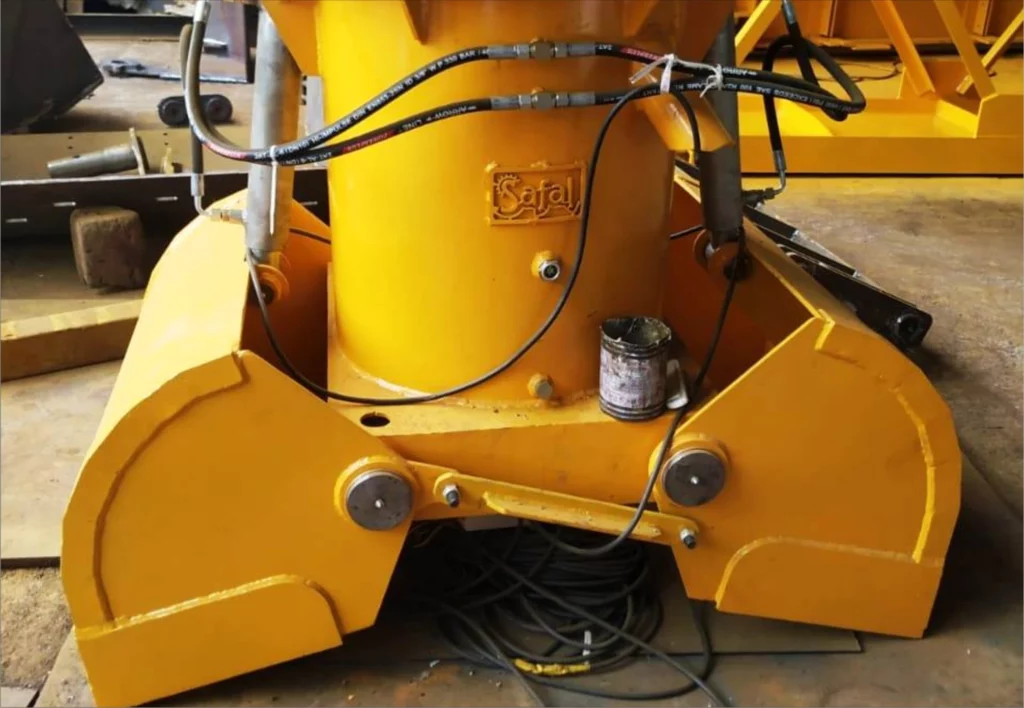Mechanical Grab Bucket Manufacturer in India
Get the job done faster with Mechanical Grab Buckets! Our superior design and sturdy construction supports higher material density, has lighter dead weight and higher capacity. Santek is one of the leading Grab crane manufacturers in India. Our mechanical grab buckets have a pin shaft made of 40 Cr steel and a knife edge made of wear-resistant steel plate. Additionally, it includes a pulley that can withstand high temperatures and great sealing abilities. It has emergency brakes and protection mechanisms, greater cylinder protection with C5M coating against corrosion. Experience Superior Material Handling Solutions with Santek Equipments, Your Trusted Grab Bucket Manufacturer in India. Santek Equipments stands as a pioneer in the industry, offering a wide range of high-performance grab buckets designed to meet the demands of various industries in India. Our precision-engineered grab buckets are built to optimize material handling efficiency and ensure seamless operations.
Grab buckets are designed as per, volume of material to be lifted and its cycle time of clelivenng the raw material to other line. Grab buckets are required in the cement. Sugar industry and various other industries for the applications and handling of bulk raw material to feed the supplies. The grab buckets are offered with eat cranes as well for various industrial applications.
Application Areas:
- Cement Industry
- Sugar Industry
- Waste Disposal Plants
- Construction Industry
- Power Plants
- Chemical Plants
- Fertilizer Plants
- Steel Plants
- River Ports
Span: 10 – 60 Meters
Capacity: 5 – 150 Tonnes





